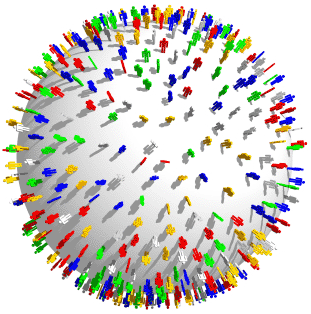
For the last year I've been experiencing a much lower response rate on my direct response marketing. Frankly, it's my fault. I've gotten lazy. And greedy! Yup! Instead of tightly narrowing the niche of prospects that I wanted to call me, I opened up the spigot and included a larger portion of loser prospects. Well, including a larger number of unqualified leads, just sends the response rate, by percentage, into the toilet. Whoops. I hate toilets.
So, what to do?
First, I had to remember that in today's market, the stigma of being in foreclosure is practically non-existent. Without over stating this point, it's almost a badge of honor for someone to be included in the "bubble market" foreclosure club, as I put it. So why does this effect the sub2 game?
Well, in the recent past, our direct response marketing would attract those who wanted to avoid foreclosure like flies on you-know-what. Today, with government interference with the foreclosure process, and buyers waiting for the next "bail-out option", borrowers headed for trouble will think seriously about squatting in their homes until the last minute, expecting the bank to pay them cash to get out, or....offer them a "rent option" in return for the deed. This negatively effects the motivations of our more likely prospects.
So, what to do, again?
We focus the niche more tightly. We limit our profiles (farm prospects) to just those homeowners that are the most likely to want to save their credit, and not take advantage of the bank...get free rent...and/or a cash pay-out to move. Who are these folks?
These are folks in the upper price point neighborhoods. These folks have more to lose. They have assets that a bank will attach in the event they go into default. These are the borrowers that have too much in the bank for the lender to even consider a short sale, or even a loan modification, in most cases. Do these sellers actually get motivated to give us their deeds?
Yes.
Every price bracket has motivated sellers. However, in the upper price ranges, the sellers are more proactive and practical in ridding themselves of a property they must sell. I'll go out on a limb here and say these same owners have more faith in themselves than the cheaper homeowners have in themselves. As a result, they see themselves recovering faster, taking a step to save their credit, and put themselves into a more empowering position by selling their houses to us...even though we represent a non-conventional approach to selling.
Now, you're thinking, "Wait Jay! How do you make money off of high priced homes that are under water. I don't. I focus on the sellers that have little or no equity, not negative equity. That's the all-important distinction. This also narrows the playing field dramatically. Now, our response rate climbs by percentage drastically, since we're dealing with proactive sellers who need to get out, but have something to offer us --- a title and a tiny bit of workable equity.
BTW, how many dollars of equity is there at 10% of a million? $100,000?
How about 10% of $100,000? $10,000?
Would you say that's about a $100,000 difference? That's why spending our time on skinny deals in the upper price points is so much better than the "bread and butter" deals. The actual dollars are huge, despite the percentage of the deal.
So, limiting our focus on the most likely sellers that want to protect their credit, their reputation, and their immediate financial picture, are the same ones we can make between $100,000 on with a sub2 transaction that can be completed from start to finish with just a few days.
If you would like to know exactly how to make $100,000 investing in high dollar properties without credit or much cash, click this sentence.






